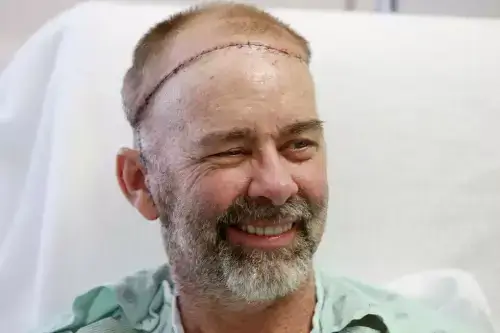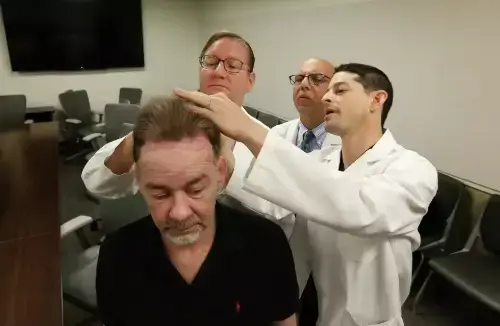Exactly 20 years ago (on November 27, 2005) the world’s first ever partial face transplant was performed on Isabelle Dinoire in France. Her face had been severely disfigured by her pet dog. Unfortunately, Ms. Dinoire passed away in 2016 at the young age of 49 from cancer that was thought to be caused by the heavy use of immunosuppressant drugs. The world’s first ever full face transplant occurred 15 years ago in 2010 in Spain. This was followed by the first ever full face transplant in the US in 2011.
I have always been fascinated by face transplants and organ transplants from one person to another. Besides the scientific progress connotations, such advances also mean a greater likelihood of person-to-person (allogeneic) hair transplants finally becoming successful. Which would mean a hair loss cure, since the limited donor hair problem of hair transplants would be resolved. Moreover, unlike organ transplants, allogeneic hair transplants when realized may likely work without the need of any side effect causing immunosuppressants.
Face Transplant Procedures: Successful Long-Term Outcomes still in Doubt
Despite all the hype 15 years ago, only 50 reported full face transplants have been performed worldwide to date. I was always surprised that this procedure never became more common. Especially when people were even seriously considering the potential of a full body transplant (also called a head transplant).
Today’s Guardian article now makes it clear as to why face transplants have not taken off as would be expected by now.
The potentially life-threatening side effects from taking strong immunosuppressants for a long time include cancer, kidney failure and heart failure. Some patients end up with huge lifelong on-going medical bills. Some cannot overcome the psychological issues of seeing someone else’s face on their own. Especially when family members and friends look at them with shock. Some hate the lifelong attention. In the case of the late Ms. Dinoire:
“One day she found a new hair on her chin. “It was odd. I’d never had one. I thought, It’s me that has given it life, but the hair is hers.”
Isabelle felt less like a princess than a circus animal. After the transplant, she spoke of being tormented: “Everyone would say: Have you seen her? It’s her. It’s her. And so I stopped going out completely.”
Patients are also always at risk of the face being rejected even years after the procedure. It should be noted, however, that resolving this problem with organ transplants has improved substantially in recent years (although only in the developed world). Nevertheless, the long-term medical, psychological and cultural consequences of face transplants remain deeply unclear.
Per the Guardian article, negative face transplant outcome data is likely under-reported due to funding battles and institutional rivalry. Patients are often also reluctant to report their displeasure due to pressure from their surgeons and hospitals.
A Full Face Transplant and a Skull and Scalp Transplant Give two Bald Patients New Hair
On a related note, in the past, I covered two very interesting cases of: the world’s first African ethnicity person to get a full face transplant; and the world’s first ever combined skull and scalp transplant. Both procedures (posted below) gave the severely bald recipient a full head of hair.
Robert Chelsea is the first ever African heritage person to get a full face transplant (in the US in 2019). In today’s Guardian article that I linked to earlier, I was glad to see that Mr. Chelsea is still alive. Unfortunately, he has run into severe financial difficulties and even had his car repossessed. He is running a Gofundme in case you want to help out.

US-based James Boysen received the world’s first ever skull and scalp transplant in 2015. Incredibly, Mr. Boysen also received a new kidney and a new pancreas during the procedure because his old ones (that were also transplants!) were failing. Mr. Boysen was a diabetic since age 5, and he got his first kidney and pancreas transplants in 1992. Mr. Boysen would be 65 years old this year, assuming he is still alive. I have not seen any new updates about him in recent years.
Mr. Boysen described his new hair after his scalp and skull transplant as a nice problem to have. His surgeons marveled at his new scalp sweating and growing hair within a few days of transplantation.


Crazy how that scalp transplant guy grew all that thick hair. But why did the face transplant black guy need to get the hair moved from the donor too? I think no scalp hair suits black men just fine.